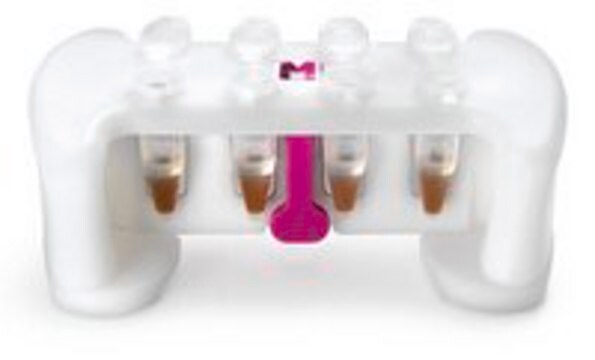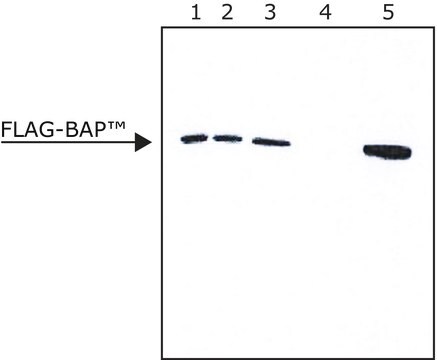IP50
Protein G Immunoprecipitation Kit
sufficient for 50 assays
Synonym(s):
Immunoprecipitation kit
Sign Into View Organizational & Contract Pricing
All Photos(1)
About This Item
UNSPSC Code:
12352203
NACRES:
NA.32
Recommended Products
usage
sufficient for 50 assays
Quality Level
technique(s)
immunoprecipitation (IP): suitable
storage temp.
2-8°C
Application
The kit is designed to allow maximal recovery of immunoprecipitates. It provides all the necessary reagents to perform immunoprecipitation from cell extracts of any protein to which a suitable antibody is available. Based on protein G, the kit binds to most commonly used antibodies. In addition, spin columns are provided to enable quick washes without the loss of protein G resin and thus protein yield is maximized.
Features and Benefits
- Minimal loss of antigen-antibody bound beads during washing.
- Minimal or no non-specific signals by increasing the stringency of the washing step.
Preparation Note
When preparing reagents, use ultrapure water (17M -cm)
related product
Product No.
Description
Pricing
Signal Word
Warning
Hazard Statements
Precautionary Statements
Hazard Classifications
Eye Irrit. 2 - Flam. Liq. 3 - Skin Irrit. 2
Storage Class Code
3 - Flammable liquids
WGK
WGK 3
Certificates of Analysis (COA)
Search for Certificates of Analysis (COA) by entering the products Lot/Batch Number. Lot and Batch Numbers can be found on a product’s label following the words ‘Lot’ or ‘Batch’.
Already Own This Product?
Find documentation for the products that you have recently purchased in the Document Library.
Customers Also Viewed
G-protein alpha-s and -12 subunits are involved in androgen-stimulated PI3K activation and androgen receptor transactivation in prostate cancer cells
Liu,J et al.
Prostate (2011)
Signal Transduction Protein Array Analysis Links LRRK2 to Ste20 Kinases and PKC Zeta That Modulate Neuronal Plasticity
Zach,S et al.
PLoS ONE, 5(10) (2010)
Attenuated PGI2 synthesis in obese Zucker rats
Hodnett,B et al.
American Journal of Physiology. Regulatory, Integrative and Comparative Physiology, 296(3), R715-R721 (2010)
R Meller et al.
Epilepsy research, 70(1), 3-14 (2006-03-18)
In response to harmful stresses, cells induce programmed cell death (PCD) or apoptosis. Seizures can induce neural damage and activate biochemical pathways associated with PCD. Since seizures trigger intracellular calcium overload, it has been presumed that the intrinsic cell death
Robert Meller et al.
The Journal of biological chemistry, 281(11), 7429-7436 (2006-01-25)
A previous exposure to a non-harmful ischemic insult (preconditioning) protects the brain against subsequent harmful ischemia (ischemic tolerance). In contrast to delayed gene-mediated ischemic tolerance, little is known about the molecular mechanisms that regulate rapid ischemic tolerance, which occurs within
Our team of scientists has experience in all areas of research including Life Science, Material Science, Chemical Synthesis, Chromatography, Analytical and many others.
Contact Technical Service













